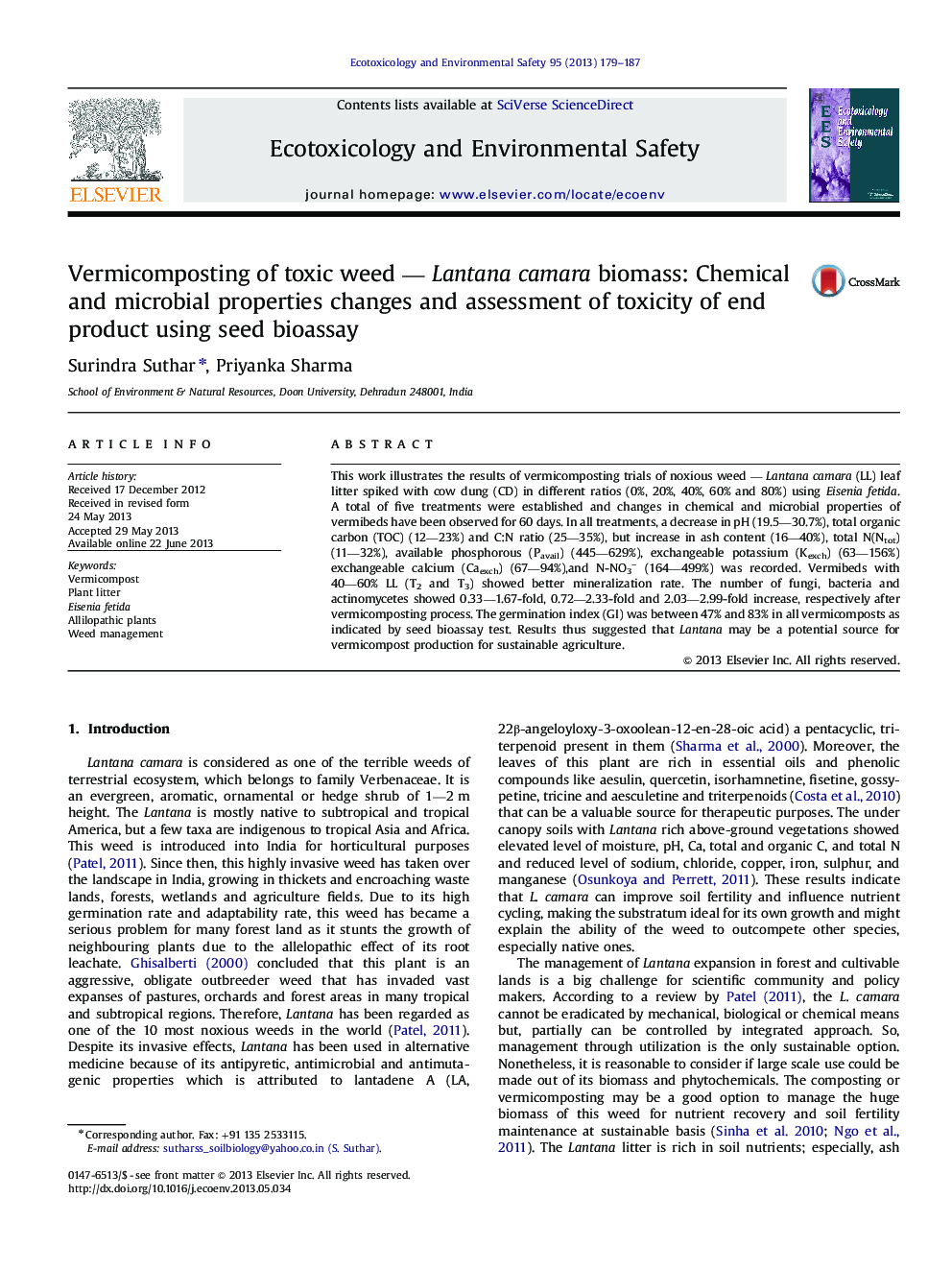| Article ID | Journal | Published Year | Pages | File Type |
|---|---|---|---|---|
| 4420356 | Ecotoxicology and Environmental Safety | 2013 | 9 Pages |
•Vermicomposting of Lantana waste mixtures results in a value-added end products.•The microbial population (fungi, bacteria and actinomycetes) was many fold in processed materials.•Plant bioassay test suggested the non-toxicity of vermicomposted Lantana waste biomass.
This work illustrates the results of vermicomposting trials of noxious weed — Lantana camara (LL) leaf litter spiked with cow dung (CD) in different ratios (0%, 20%, 40%, 60% and 80%) using Eisenia fetida. A total of five treatments were established and changes in chemical and microbial properties of vermibeds have been observed for 60 days. In all treatments, a decrease in pH (19.5—30.7%), total organic carbon (TOC) (12—23%) and C:N ratio (25—35%), but increase in ash content (16—40%), total N(Ntot) (11—32%), available phosphorous (Pavail) (445—629%), exchangeable potassium (Kexch) (63—156%) exchangeable calcium (Caexch) (67—94%),and N-NO3− (164—499%) was recorded. Vermibeds with 40—60% LL (T2 and T3) showed better mineralization rate. The number of fungi, bacteria and actinomycetes showed 0.33—1.67-fold, 0.72—2.33-fold and 2.03—2.99-fold increase, respectively after vermicomposting process. The germination index (GI) was between 47% and 83% in all vermicomposts as indicated by seed bioassay test. Results thus suggested that Lantana may be a potential source for vermicompost production for sustainable agriculture.
